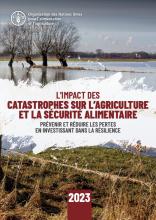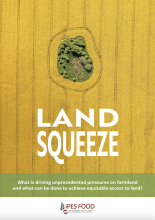Land Library Search
Through our robust search engine, you can search for any item of the over 73,000 highly curated resources in the Land Library.
If you would like to find an overview of what is possible, feel free to peruse the Search Guide.
/ library resources
Showing items 10 through 18 of 3271.Nous sommes ravis de partager avec vous la publication récente de l'Organisation Panafricaine des Agriculteurs (PAFO) : Gérer les Connaissances des Agriculteurs : "Bonnes expériences et pratiques prometteuses, de l'événement global de gestion des connaissances du FO4ACP".
This one-pager provides details on the LAND-at-scale project in Egypt. This project is implemented by GIZ Egypt, and financed by the Ministry of Foreign Affairs via the Netherlands Enterprise & Development Agency (RVO).
Partout dans le monde, les catastrophes engendrent des destructions d’une ampleur inédite.
Land is critical to the lives, livelihoods, and food security of millions of people across the world. But a series of unprecedented pressures on global farmland are now accelerating and converging.
This study contributes to the observed reduction of arable lands discourse by examining the shift in land use patterns as well as factors influencing farmers' shift from crop production to mining activities.
This study addresses the significant issue of land fragmentation in Ethiopia, which is characterized by small, irregular, scattered parcels with no or adequate road access.
This report provides an overview of land administration and certification efforts in Ethiopia, focusing on the Second-Level Land Certification (SLLC) program.
The global discourse within the realm of agriculture has been dominated with challenges of food security (FAO, 2022), (HLPE, Food security and nutrition: building a global narrative towards 2030, 2020) loss of biodiversity, environmental pollution and resource degradation and climate change.
The department of Caquetá in the Colombian Amazon plays a crucial role in addressing greenhouse gas (GHG) emissions from food systems, primarily stemming from land use changes, such as the conversion of forests into pastures, and agricultural practices.






